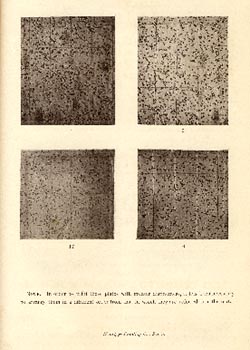
Read before the Boston Society of Medical Sciences, January 21, 1879, and the Boston Society for Medical Observation, March 17, 1879.
The Boston Medical and Surgical Journal.
Warren, J. Collins., M.D., editor.
Boston: H. O. Houghton, Osgood and Company, 1879.
Cambridge: The Riverside Press.
Volume C., no. 14 (April 3), pp. 453-459, ill.
5 heliotypes showing
28 photographs of slide preparations.
24cm.
The heliotypes accompanying this abstract are probably the first published photographs of blood counts taken with a new haemoglobinometer that was introduced to medical science by Sir William Richard Gowers a few months earlier. Dr. Amory took over 200 photographs of assays he made while treating five patients for their anemia with dialyzed iron. The instrument proves to be remarkably accurate even by modern standards. Dr. Amory gives an error rate of 3% and suggests that enumeration is more accurate when taken from photographs rather than directly from the slide.


Gowers's haemacytometer, the instrument I used in the following observations, consists of a glass slide upon which are ruled squares one tenth of a millimetre in extent, and these are inclosed in a cell one fifth of a millimetre in depth. This slide can be used with any microscope, and with a lens of any desirable magnifying power; moreover, the magnified image of the slide may be projected by means of a prismatic eye piece upon a screen. The principle of Malassez's "compte globule' does not admit of either of these convenient methods of delineation.
